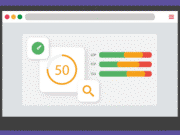Physical newspaper and magazine subscriptions have dwindled significantly in recent years, thanks to the internet. Why would you pay for paper news when you can access all the articles and details, you’d ever want from a device in your pocket? When it comes to marketing, this presents new challenges and has many marketers questioning the future of print advertising.
The Current State of Print Advertising

Print mediums have been declining steadily for the last 30 years. Newspaper decline is a chief contributor to print advertising reduction. This industry used to hold the majority of advertising dollars. In 1994, weekday print circulation for newspapers was 60 million, and that amount has cut in half today. Advertising revenue has taken a larger hit as a result, going from $65 billion then to $19 billion in recent years. As a result, newspapers are going out of business all over the country.
“It doesn’t take clairvoyance to imagine that this downward trajectory will put one or both companies out of business in the next two-to-five years, which would leave most of the country’s major cities without a hometown daily,” newspaper experts Douglas McLennan and Jack Miles write in a Washington Post article.
This indicates a significant decline in advertising both today and in the future. There’s an onslaught of user-generated content and easy-to-publish blogs and online magazines that are picking up the slack.
Digital advertising has taken center stage as a result. These advertisements are often seen as more affordable and effective at reaching a certain audience. Consequently, some companies don’t spend a dime on print advertising.
Newspaper advertising is a rapidly-dying breed, but print advertising in other mediums, such as magazines, is still holding strong. Bauer Media Group USA CEO Steven Kotok told Folio that three-quarters of their revenue is driven by magazine advertisements.
“Because readers are making an active purchase decision the day, they read the magazine, we provide outsize reader engagement that we can very convincingly demonstrate with third-party data,” he said. “And because our readers are retail shoppers who encounter and purchase our products in a retail environment, we are uniquely able to activate retail consumer purchases.”
The current state of advertising has not discounted print mediums just yet.
Print Ads Will Evolve

We’re expecting to see further shifts of print media as we enter a new year in the digital age. While magazines will continue as key mediums for print ads, we’ll also see a variety of other highly effective ad strategies.
For example, businesses send out postcards and mailers to generate brand awareness and secure loyal customers and clients. Research presented by Forbes shows that direct mail ads receive a 4.4 percent response rate, which is huge compared to the 0.12 percent rate for email. Sixty percent of mailer recipients also report a longer-lasting mental impression from the mail.
This is true even among millennials. About 36 percent of those under the age of 30 still look forward to checking the mail every day, even if all they get is “junk.” They’re likely to remember and potentially act on mailers as a result.
Results are even better if you send saddle stitched booklets with in-depth details and high-quality photos of your service. Consumers will spend more time looking through such a piece of mail than a postcard that they’ll glance at and toss in the trash. You have a greater chance of converting customers with more detailed content.
Digital and Print Integration Works Best

In 2019 and the near future, those who deliver the most effective marketing campaigns will use a mixture of print and digital ads to capture consumer interest. This is an idea presented simply by Sam Cox, vice president of global media for MediaMath, the software provider behind Time Magazine’s print and digital platform.
“The idea is that we can use the tools that we’ve traditionally used for digital closed-loop attribution and start to use them for other forms of media, but that’s going to take a lot of work with audience syncing over the next few years,” he told the American Marketing Association. “If we, as digital marketers, can think about how to define the ROI, and how to bring some of the values that print has in terms of brand lift, recognition and all of the other brand metrics that are traditionally associated with [an ROI] study that you would do with print, and integrate that into your digital offering, we think that the whole is greater than the sum of its parts.”
Marketers must figure out how to marry the best of both the print and digital worlds if they want to achieve optimum reach. This can be as simple as adding a social media URL to a print advertisement or asking online followers to sign up for a free catalog to be sent in the mail.
Together, these two mediums can present a more holistic, effective advertising strategy for 2019 and beyond.





